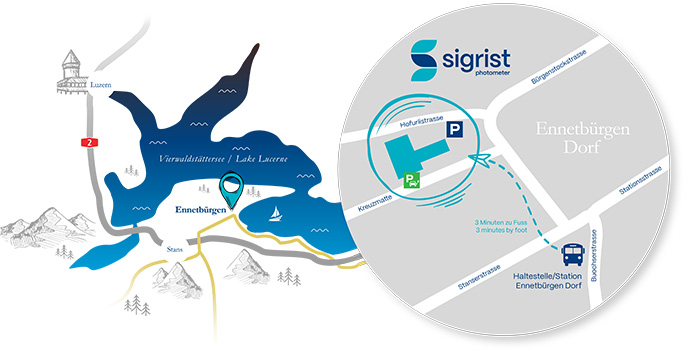Photometric measuring principle based on detecting the light emitted as a result of fluorescence.

Fig. 18: Principle of fluorescence measurement
The excitation light passes through the sample containing the fluorescent substance. The latter converts part of the incident light of wavelength λ into fluorescent light of a greater wavelength λ1 The light created in this manner radiates in all directions and can be measured with a detector set perpendicular to the axis of the incident light.
For low concentrations, the radiant flux of fluorescent light is proportional to the concentration of the fluorescing substance. The main reasons for using fluorescence measurement are its relatively high selectivity and sensitivity compared with absorption measurement.
The presence of solids (turbidity) can falsify the measurement. For one thing, the resulting scattered light increases the quantity of light measured, and for another, the solids weaken both excitation light and fluorescent light as a result of scatter and absorption.
The falsification caused by scattered light can be eliminated by inserting an optical filter at the outlet of the flow cell that blocks the short-wave excitation light λ. As a result, only the fluorescent light λ1 #160;reaches the photocell - effectively eliminating any influence of turbidity on the results.
Here again, contamination of the flow cell windows is avoided by using the free-fall flow cell. Oil trace measurement

